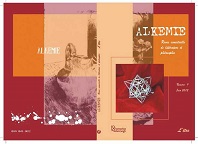L’Être du labyrinthe (sur Hamlet)
The Being from the Labyrinth (on Hamlet)
Author(s): Pierre JametSubject(s): Philosophy
Published by: Classiques Garnier
Keywords: Shakespeare; Hamlet; labyrinth; Being; to become; mannerism; baroque
Summary/Abstract: This is a fragmentary exploration of Hamlet as ontological meditation. The accepted interpretation of Shakespeare’s play is that the prince of Elsinor, in parallel with a quest for justice and truth, meditates freedom and fate, vengeance and forgiveness, life and death, being and nothingness. Torn between father and mother, spirituality and sensuality, vengeance and forgiveness, memory and forgetfulness, freedom of action and fate, quest for truth and need for serenity, Hamlet dies as in a sacrifice. The ultimate meaning of the play would be that renunciation to violence in the name of the father must lead to the advent of truth as one element of Being. Being is then to be understood as belonging to a realm which stretches beyond appearances, beyond the labyrinth of the world. The Christian tradition does use the labyrinth as a symbol of life after the Fall, a labyrinth that must be gone through painfully but with faith in the advent of the light‑God, who only really is. Yet Shakespeare always leaves many interpretations open to his spectator or reader, and his art, which is here defined as fundamentally mannerist and perhaps even baroque in essence, suggests that there is much joy and happiness to be derived from the labyrinth itself, from appearances. The consequence is that appearances can be seen to acquire an ontological dimension too, but in a very specific sense of the word.
Journal: ALKEMIE. Revue semestrielle de littérature et philosophie
- Issue Year: 2012
- Issue No: 09
- Page Range: 58-68
- Page Count: 11
- Language: French

